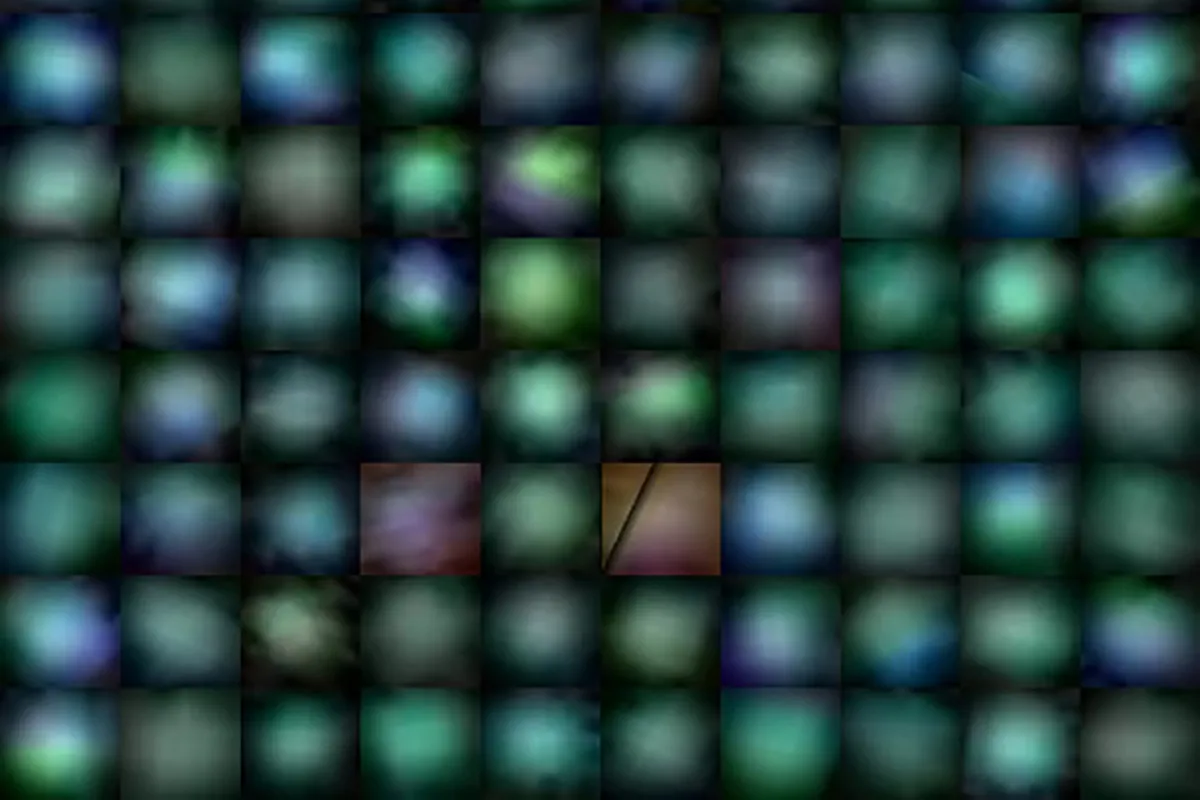First, there were the Green Pea galaxies, and now Blueberry galaxies.
The compact, round, green systems known as Green Pea galaxies were given their vegetal moniker by the volunteer participants on the Galaxy Zoo project who discovered them.
Astronomers like amusing names, and so the Green Beans (stringier versions of the Peas) quickly followed, along with suggested Green Chillies (bendier versions of the beans).

Green Pea galaxies explained
These systems attract attention because of their distinctive green colour, caused by bright emission from oxygen that is associated with star formation.
They are dwarf galaxies, but they are forming stars at a rate that would be unusual in systems 10 times their size.
They are the most efficient factories of stars in the local Universe, though no one can agree why.

Astronomers peering at the Green Peas with orbiting X-ray telescopes have found them much brighter than expected.
Signs, perhaps, that black holes more massive than we would have ever expected in such dwarf galaxies are present.
As if that wasn’t intriguing enough, recent observations with the James Webb Space Telescope of high-redshift galaxies in the early Universe look rather like our local Green Peas, suggesting that the latter might just be stragglers, the last systems to go through a spectacular stage that most galaxies got over billions of years ago.
So studying the Peas is important, but there’s a catch.

What makes Blueberry galaxies blue
Though nowhere near as distant as the galaxies studied by the James Webb Space Telescope, Green Pea galaxies aren’t that local, existing between about 2.5 and 4 billion lightyears away.
At those distances, the redshift caused by the expansion of the Universe shifts the oxygen emission towards the red, producing the distinctive green colour that allowed the Peas to be identified in the first place.
Those hunting similar systems closer to home need to look for round, blue galaxies – which they’ve started calling Blueberries.
Several punnets-worth of these systems are now known, and there is a science paper that takes a first look at their X-ray emission using ESA’s XMM-Newton orbiting observatory.
This is the first time any Blueberry galaxies have been observed at X-ray wavelengths, and the results are surprising.

Blueberry quandry
While Green Peas seem bright at these wavelengths, most of the seven systems were less luminous in the X-ray than we’d expect for galaxies of their size; all but two weren’t even detected!
So what’s going on?
One possibility is that the population of Blueberry galaxies may be very young, so much so that their stellar population hasn’t yet evolved enough to produce binary systems with a normal star paired with a neutron star or black hole, which shine brightly in X-ray.
If that’s right, these small galaxies formed most of their stars in the last five million years, a blink of a cosmic eye.
Confusingly, one of the systems (which Star Wars fans will be pleased to hear is called BB8) glows surprisingly brightly.
The researchers suggest this might host a growing black hole, but then we need to explain why only one of the systems does.
With more mysteries found by these observations than solved, telescopes will be picking Blueberry galaxies for a long while yet.
Chris Lintott was reading X-ray Observations of Blueberry Galaxies by B Adamcová et al. Read it online at: arxiv.org/abs/2408.13572.
This article appeared in the November 2024 issue of BBC Sky at Night Magazine
